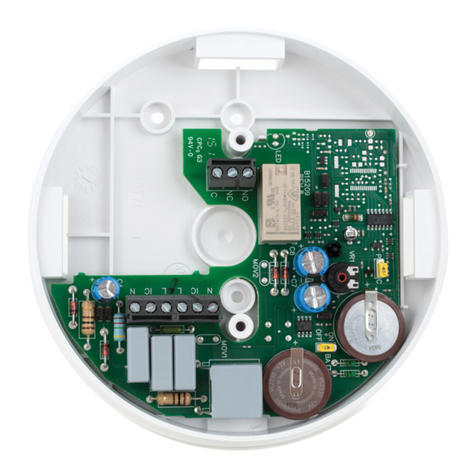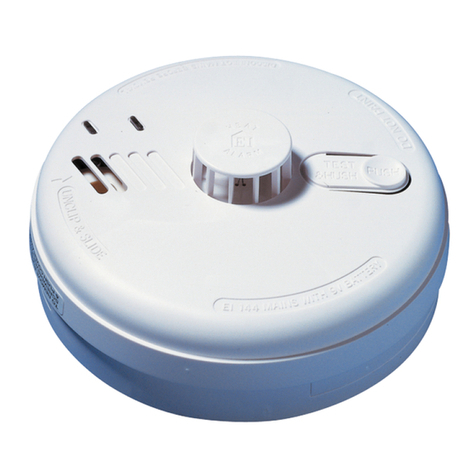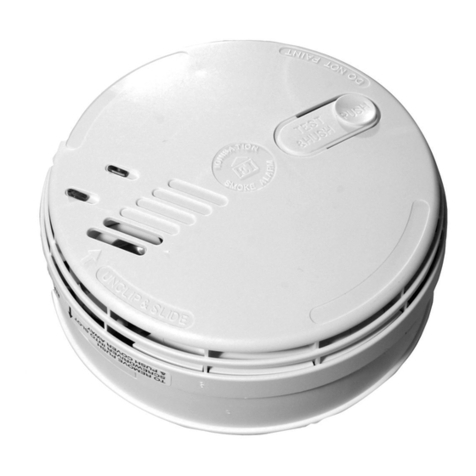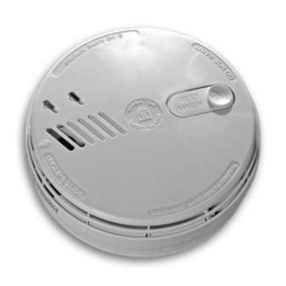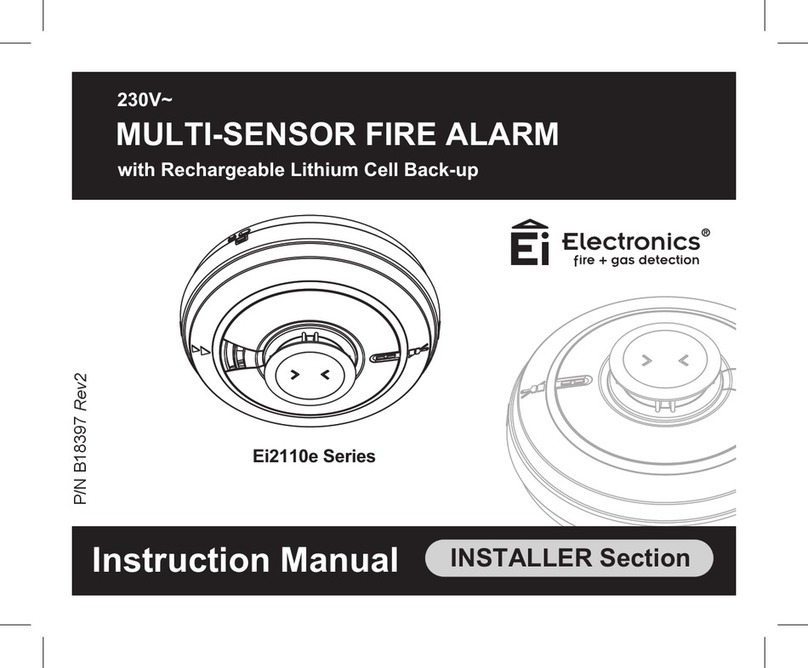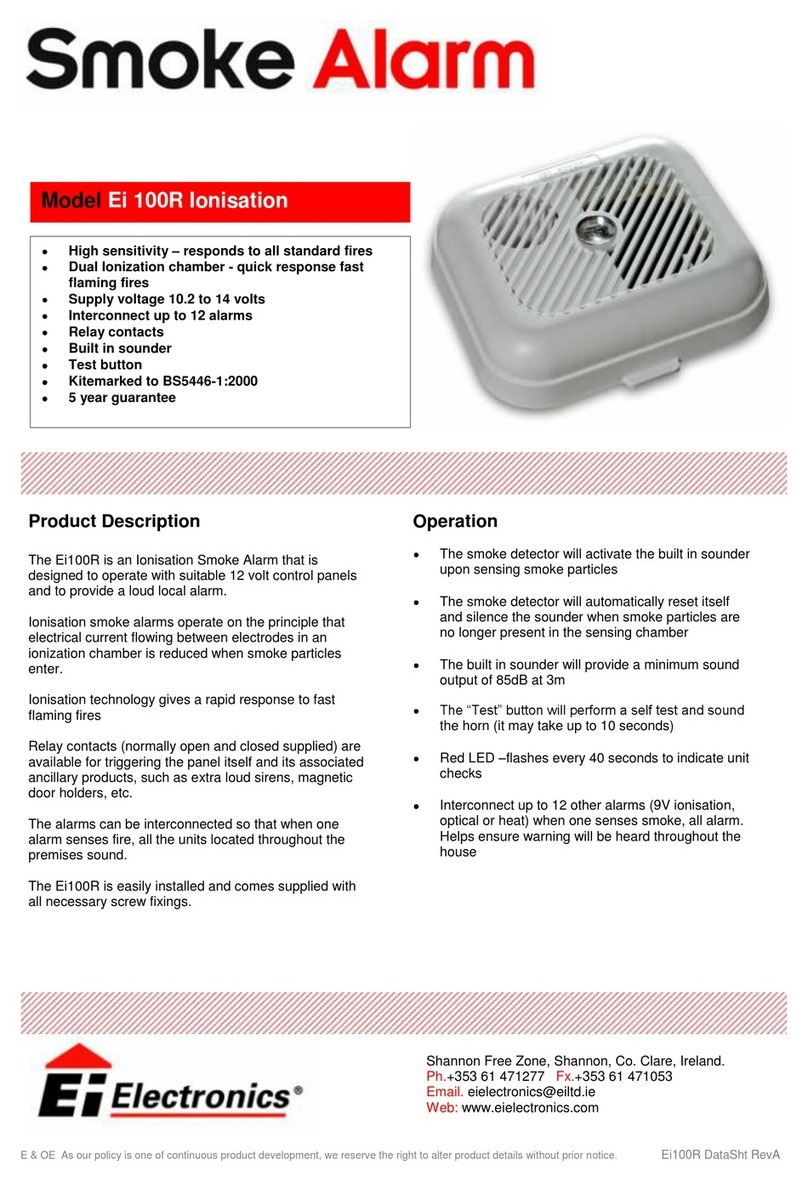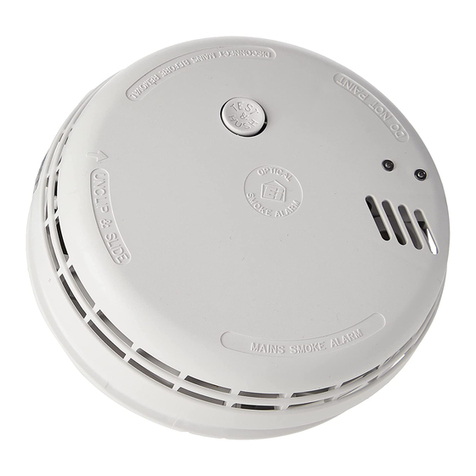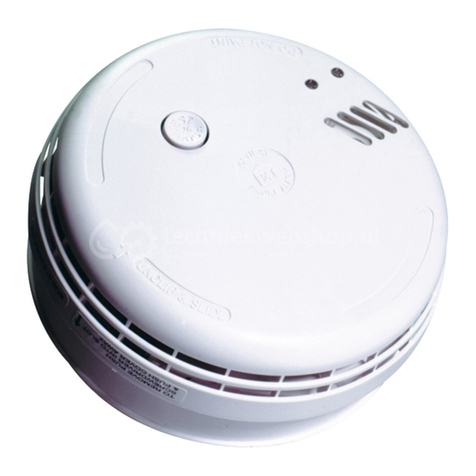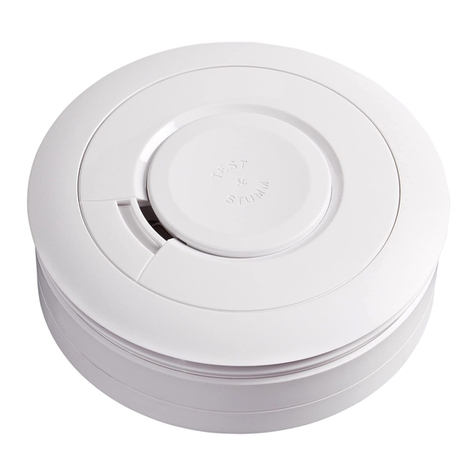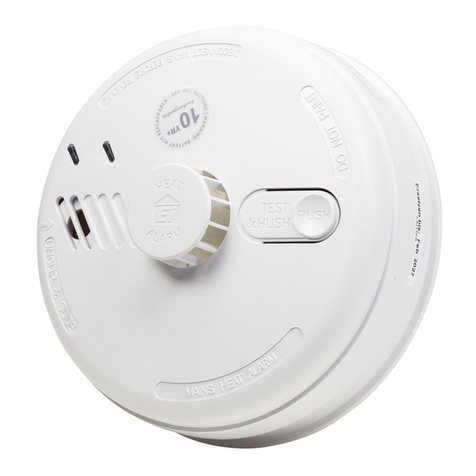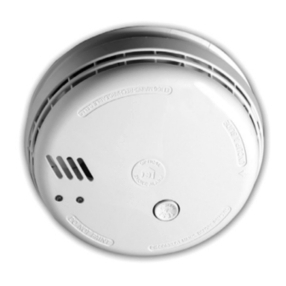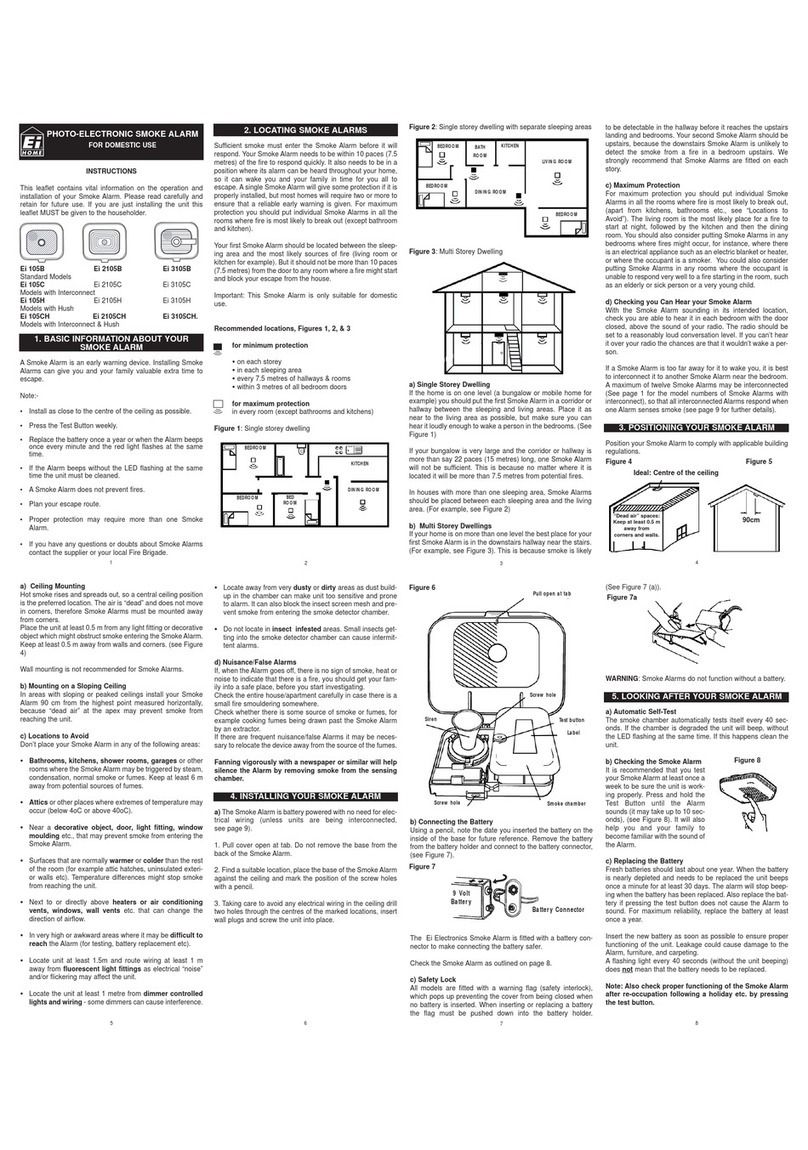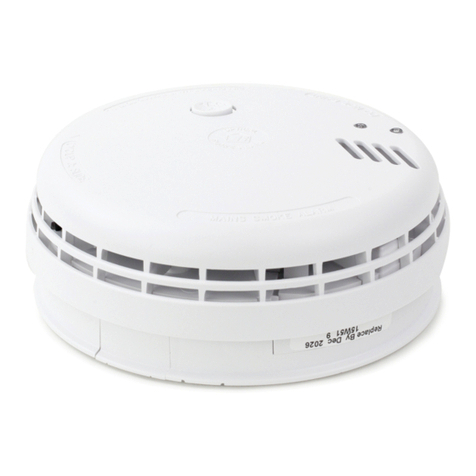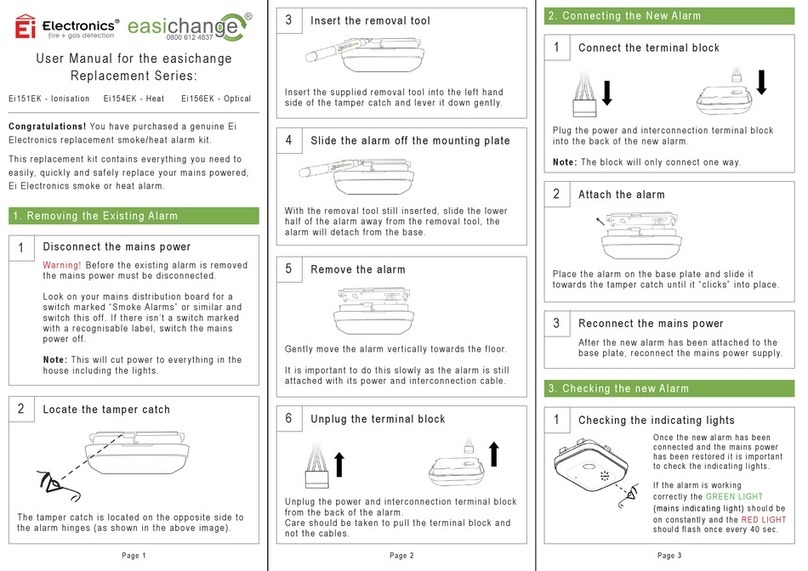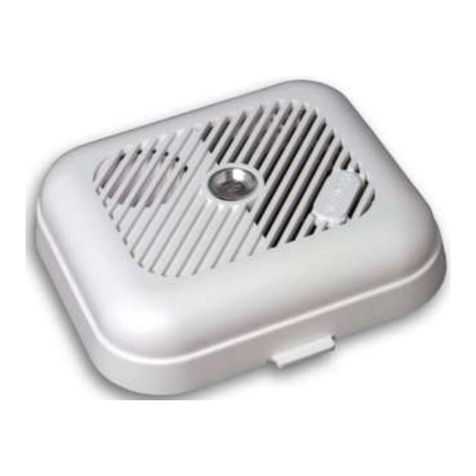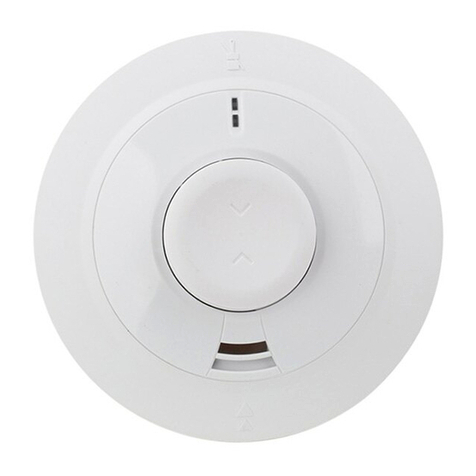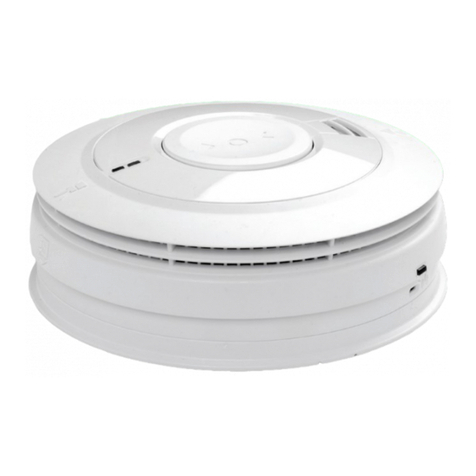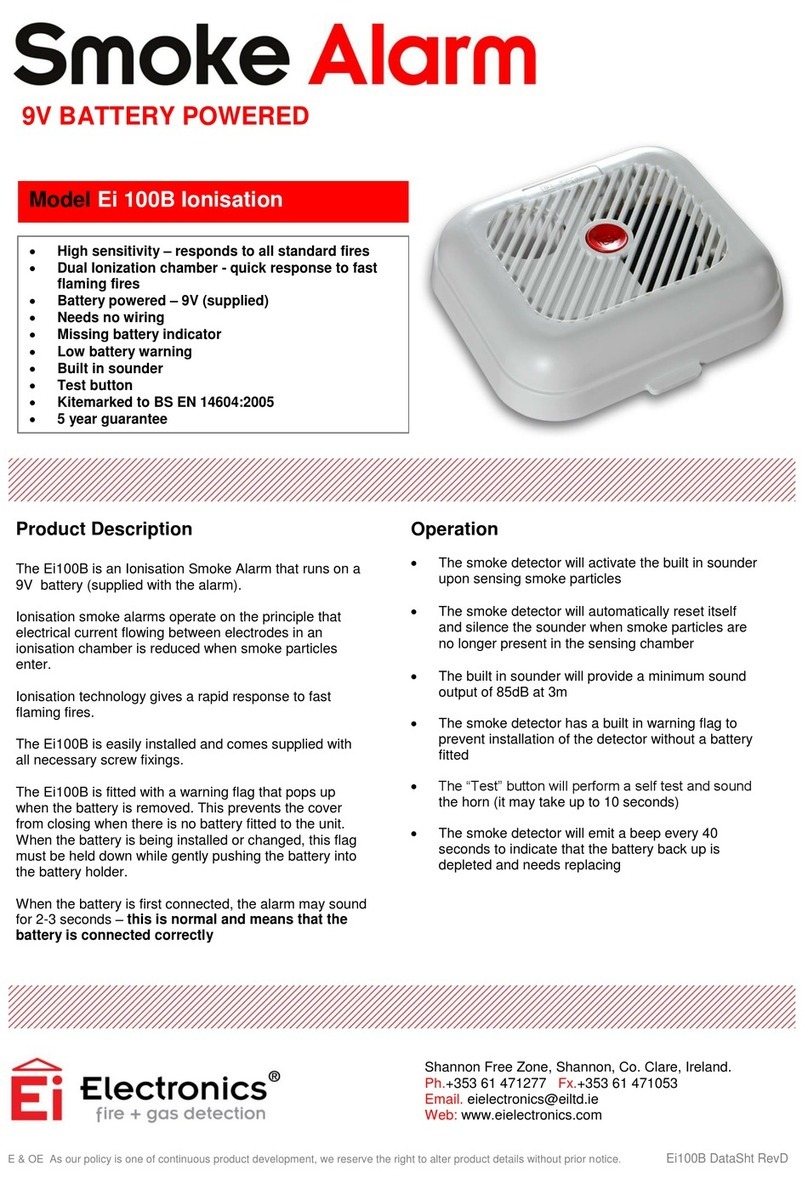4
The wireless interconnect will operate as received once the
batteries are connected. To check operation, first connect all
the batteries (see figure 1) and then hold down the test button
on the first unit until the blue light comes on continuously for
3.5 seconds. All the other smoke alarms will respond within 5
seconds. If there is any possibility of a neighbour having a
similar system, you should house code your units so your sys-
tem will not cause his/hers to alarm or vice versa. This is eas-
ily done and only takes a few minutes- (see section 6.0).
A remote control Ei410 is available to allow you to test and
hush the alarms, without having to reach up to the smoke
alarms on high ceilings. The remote control also has a
"Locate" button to identify the unit causing the alarm - this is
excellent, particularly at night, as it rapidly identifies where the
fire is located. This is ideal for larger systems, as the distur-
bance in the house can be kept to a minimum e.g. no need to
enter all the bedrooms to check to see if the red light is flash-
ing rapidly (indicates that the unit is detecting smoke).
3. LOCATING YOUR SMOKE ALARMS
Sufficient smoke must enter your Smoke Alarm before it will
respond. Your Smoke Alarm needs to be within 10 paces (7.5
metres) of the fire to respond quickly. The smoke alarms need
to be in positions where they can be heard throughout your
home, so they can wake you and your family in time for you
all to escape. A single Smoke Alarm will give some protection
if it is properly installed, but most homes will require two or
more to ensure that a reliable early warning is given. For rec-
ommended protection you should put individual Smoke
Alarms in all the rooms (apart from the kitchen, where heat
alarms should be used) where fire is most likely to break out.
Your first Smoke Alarm should be located between the sleep-
ing area and the most likely sources of fire (living room or
kitchen for example). But it should not be more than 10 paces
(7.5 metres) from the door to any room where a fire might
start and block your escape from the house.
3.1 Single Storey Dwelling.
If your Home is on one level (a bungalow or mobile home for
example) you should put your first Smoke Alarm in a corridor
or hallway between the sleeping and living areas. Place it as
near to the living area as possible, but make sure you can
hear it loudly enough to wake you in the bedroom. (for exam-
ple, see figure 2).
If your bungalow is very large and the corridor or hallway is
more than say 20 paces (15 metres) long, one Smoke Alarm
will not be sufficient. This is because no matter where it is
located it will be more than 7.5 metres from potential fires.
